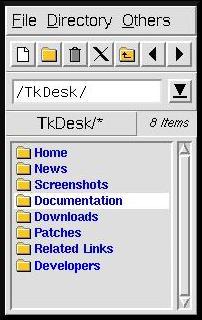Next
Previous
Contents
In order to allow remote control of TkDesk, i.e. to allow programs
outside of TkDesk to have TkDesk perform certain tasks, TkDesk
implements a TCP/IP server that can be used to send Tcl scripts to
TkDesk. Whether this server is "up" or not is
determined by the option "TkDesk Server" that is to be
found in the "Options" menu. Currently, only programs
running on the same machine as TkDesk may connect to the server,
but multiple TkDesk servers started from different users may be
running at the same time.
The server is a much faster way to send command to TkDesk then to use
the Tcl/Tk send command, as that requires a second Tcl/Tk
shell ("wish") to be started to do the send. However,
using a TCP/IP server that's basically system-wide accessible to
perform arbitrary command under the accout of the user who started
TkDesk and thus the server brings with quite a big security risk that
TkDesk tries to reduce by keeping the port the TkDesk server uses
secret. The port to be used is calculated randomly at server
start-up, and is saved into a file that can only be read by the user
who started TkDesk. To prevent "guessing" of the port
number a generated key is also stored in this file that get
passed to the server.
The client performing the communication with the TkDesk server gets
installed with TkDesk; its name is tkdeskclient. This
command expects exactly one argument which will be directly sent to
the server and evaluated there as a Tcl script. E.g. you could do a
tkdeskclient "dsk_view id"
to find out who you are :-).
Along with TkDesk a number of front-end shell scripts for
tkdeskclient are
installed, which comprise of the following:
- cd-tkdesk ?path?
Let's the currently active TkDesk file list or browser window
(i.e. the one the mouse pointer was over last) change its directory to
path if path is given, or returns the current
directory of the active window.
- ed-tkdesk ?+linenum? ?file? ...
Without argument opens a new editor window, or loads all files given
as arguments into the editor (and into the same window if you're using
a multi-buffer capable editor, such as the built-in one). If a file
is preceded by +linenum, i.e. something like +20,
the built-in editor will position the cursor on the line when
displaying the file that's given in the following argument.
- od-tkdesk ?dir?
If no arguments are given opens a file list window for the current
directory of the shell/program where the command was issued, or opens
a window for the directory specied in dir.
- op-tkdesk ?file ...?
For each file performs its default action (the one defined first in
its corresponding popup menu as defined in "Popups"), or
asks for a command to execute if no files are given.
- pop-tkdesk file
Displays the popup menu for file, as defined in the
"Popups" config file. The popup menu may also be controlled by
the keyboard: Up, Down, Return, and Esc keys do what you would expect.
Note that all of these scripts are merely examples of possible usages of
tkdeskclient. Use your fantasy to find new and even more exciting
applications! :-)
Next
Previous
Contents
|


